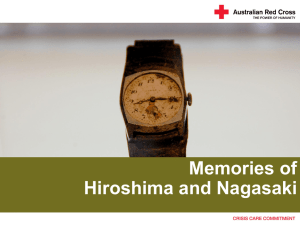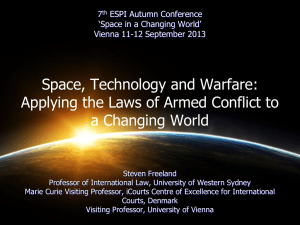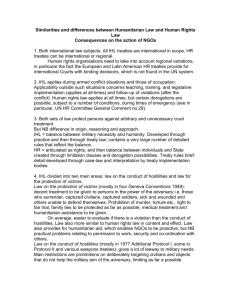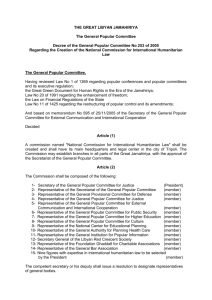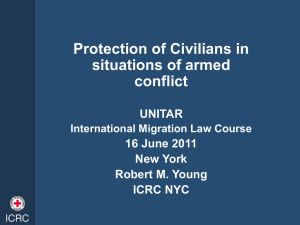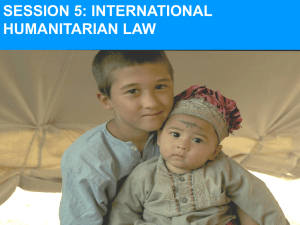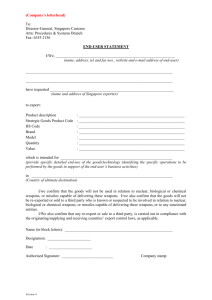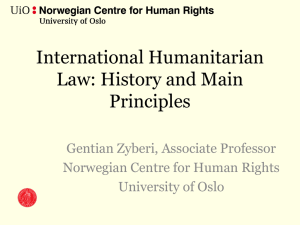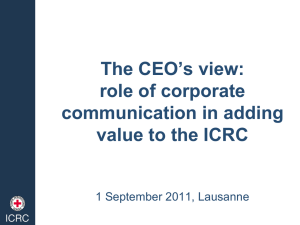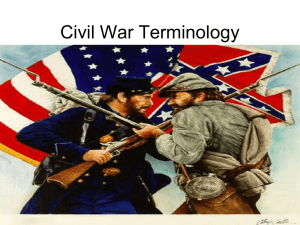Exploration 3 - Australian Red Cross
advertisement
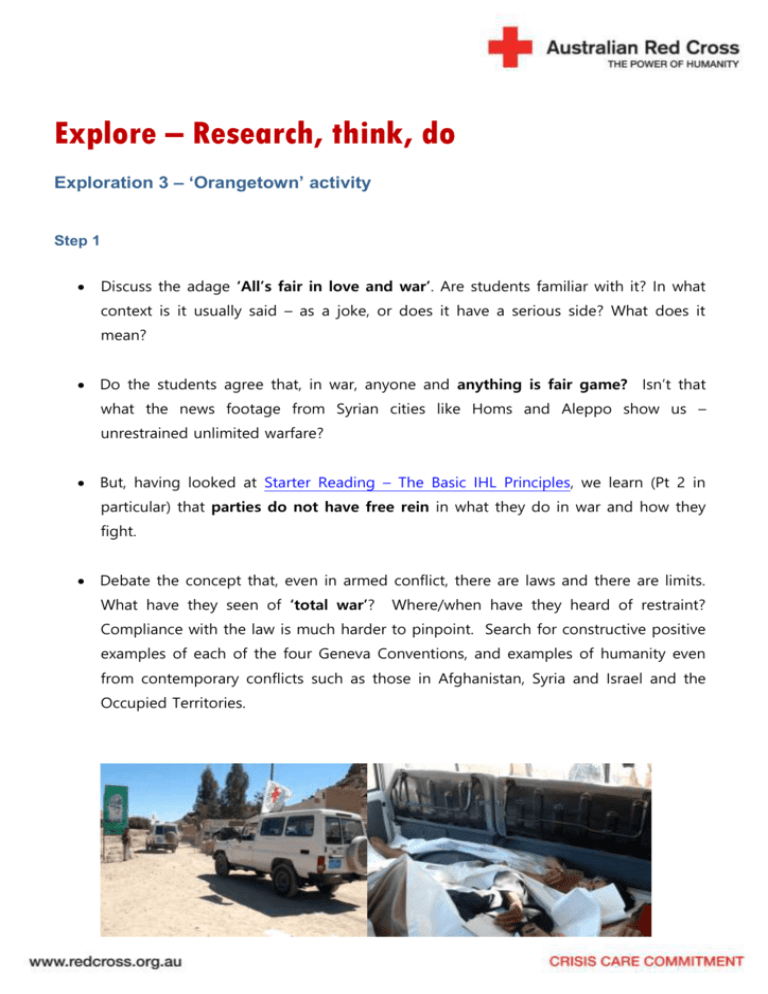
Explore – Research, think, do Exploration 3 – ‘Orangetown’ activity Step 1 Discuss the adage ‘All’s fair in love and war’. Are students familiar with it? In what context is it usually said – as a joke, or does it have a serious side? What does it mean? Do the students agree that, in war, anyone and anything is fair game? Isn’t that what the news footage from Syrian cities like Homs and Aleppo show us – unrestrained unlimited warfare? But, having looked at Starter Reading – The Basic IHL Principles, we learn (Pt 2 in particular) that parties do not have free rein in what they do in war and how they fight. Debate the concept that, even in armed conflict, there are laws and there are limits. What have they seen of ‘total war’? Where/when have they heard of restraint? Compliance with the law is much harder to pinpoint. Search for constructive positive examples of each of the four Geneva Conventions, and examples of humanity even from contemporary conflicts such as those in Afghanistan, Syria and Israel and the Occupied Territories. © ICRC The ICRC website/photograph collection may help students to identify and Handy tip: highlight some of the ‘good’ that can and does occur, even though it is rarely reported in the news. For example, this series of three photos shows the ICRC negotiating for the evacuation of 25 wounded and children from war-torn Dammaj, Yemen. They are transported first by road, then to waiting helicopters (supplied by the national army) and airlifted to hospital for treatment. Step 2 Before turning to the text of an IHL treaty (likely the students’ first look at such an international legal document) ensure that students have an overall understanding of: What the Geneva Conventions of 1949 and their Additional Protocols are. The core steps by which such a treaty is drafted, accepted as an international legal treaty, and how each nation must take its own steps to make the treaty part of its own national law (In Australia, this process is called ratification). How widely they have been agreed to by the international community Step 3 Read some law! Allow students time to peruse the layout of Additional Protocol 1 and to delve into some of the key articles of the text. The Additional Protocols of 1977 can be accessed: 1977.htm http://www.icrc.org/eng/resources/documents/misc/additional-protocols- To open discussion about targeting/protection of military/civilian sites, we suggest a focus on the following references. Senior students, or those in Legal Studies classes, may become quite fascinated with the provisions and interpreting what they mean in the reality of combat. More junior students, or say those in World War 2 History classes, may simply need to grasp that a bomb may legitimately strike a military depot but not a kindergarten. Distinction Additional Protocol 1 Art 48 Additional Protocol 1 Art 51/4 (a-c) Additional Protocol 1 Art 54/2 Additional Protocol 1 Art 35/3 Military necessity Additional Protocol 1 Art 52/2 Proportionality Additional Protocol 1 Art 51/5 (b) Articles 51/7, 52/3, 55/1 and 57/2 and 3 are also particularly relevant. Step 4 Introduce the map of Orangetown and the tasks. You are a Blueland airforce commander. Your country has declared war on its neighbour, Orangeland, to the south. Your military mission is to take control of the regional capital, Orangetown. Blueland has ratified the Geneva Conventions and the Additional Protocols, and as an individual you take your obligations under IHL particularly seriously. Before beginning to plan your operational strategy, you ask for the advice of a Legal Officer and remind yourself of the law. In particular, you want to weigh up the IHL issues surrounding the: Primary school and the weapons store Army base and the town water tank Considering the Blueland government’s orders are that you do everything feasible to protect the Orangetown population, which other sites in Orangetown are of concern to you? As Blueland commander how might you meet your military aims whilst applying the laws of armed conflict? What is ‘collateral damage’? To what extent does the law seem to allow for it? Find evidence for your answer in the text of Additional Protocol. Step 5 Prompt students to think about weapons of war. Are there rules for those too? From Pt 5 of Basic IHL Principles, or Additional Protocol 1, 35/2, discuss the following. In war, when death, loss, destruction and suffering are inevitable, what can it possibly mean to ban ‘unnecessary suffering’? Untangle what the group thinks this clause is about – and re-write it in plain English. As a group, make a list of the weapons the use of which you think would cross the ‘unnecessary suffering’ line – and which therefore actually have been banned by the international community. The images on PPT Slide 15 gives clues. Key conclusion The point is clear. Nuclear weapons breach core IHL principles more obviously, more severely than almost any other (reinforced in Slides 17- 21), yet even in the comparative ‘rush’ of treaties/prohibitions since the 1990s, a ban on nuclear weapons stands as the biggest gap yet to be filled. Step 6 Return to slides about the Red Cross Movement campaign to ban the use of nuclear weapons (nos. 23-26) and move on to Exploration 4.
